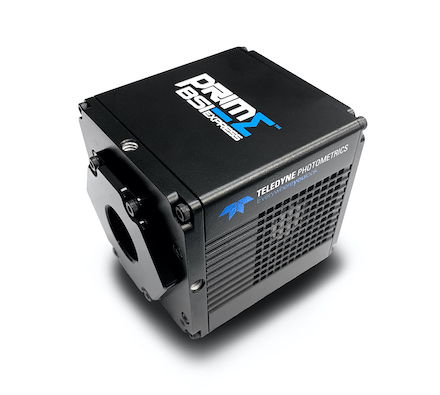TIRF Microscopy
The resolution at which fluorescent molecules can be visualized depends greatly on the preparation of the sample and the objectives used, but this can be limited by out of focus light being collected in a focal plane.
Total internal reflection fluorescence microscopy (TIRF) makes use of specific optics to produce illumination light only at the 50-100 nm range at the interface of the slide, massively reducing out of focus light and improving the ability to detect fluorescent molecules. Because of its low light intensity and high spatial resolution, it is a key technique in live-cell imaging.
TIRF is typically a very low-light technique so one of the main challenges is to collect as many of the emitted photons as possible to maximize signal to noise ratio so a highly sensitive camera is desired.

Prime 95B
Extremely sensitive, 95% quantum efficient sCMOS camera with 11 µm pixels and EMCCD level detection.
Go beyond EMCCD for TIRF with the back-illuminated Prime 95B, which features an equivalent level of detection but with a faster speed, larger field of view and no EM-gain aging or excess noise.
The Prime 95B allows exposure times to be lowered significantly to increase acquisition speed and reduce photobleaching and photodamage to the lowest levels possible on an sCMOS camera.

Kinetix
High sensitivity, 95% quantum efficient sCMOS camera with an incredibly high 400 fps full-frame speed and a massive 29.4 mm diagonal field of view.
The speed of the Kinetix significantly outperforms typical sCMOS devices. With a full-frame framerate of 400 fps and a 10 megapixel sensor, the Kinetix delivers over 4000 megapixels/second which ensures that no event goes undetected.
The high quantum efficiency and low read noise combined with the balanced 6.5 µm pixel size also delivers the sensitivity needed to get the highest image quality from a TIRF system without sacrificing resolution.

Prime BSI Express
High sensitivity, 95% quantum efficient, sCMOS camera with 6.5 µm pixels,
1.0 e– read noise and 95 fps full frame speed.
The high quantum efficiency and low read noise combined with the balanced 6.5 µm pixel size offers high sensitivity imaging whilst achieving Nyquist sampling with the most popular objective magnifications used for TIRF.
Customer Stories
TIRF Microscopy

“The quantum efficiency of the camera is a really important factor for us. If we can use less excitation power, we can increase the length of our imaging and minimize photodamage to the animal. The sensitivity of the Prime 95B is truly transformative for our type of work.”
Neuronal Single-Molecule TIRF

“The [Prime 95B] camera has the best quantum efficiency, this is decisive when you have both temporal and spatial resolution thresholds, this was the best camera for the job.”
Live Cell Exocytosis Imaging

“A big plus point of the Prime 95B is the big FOV, the other plus point is the pixel size, coming together with very good sensitivity.”



